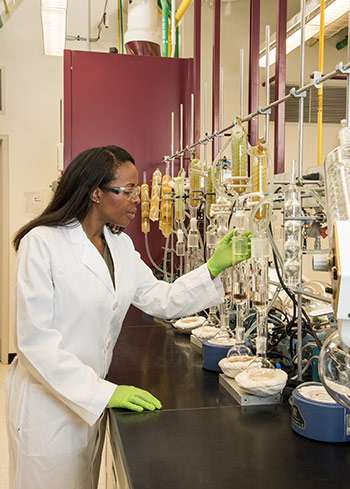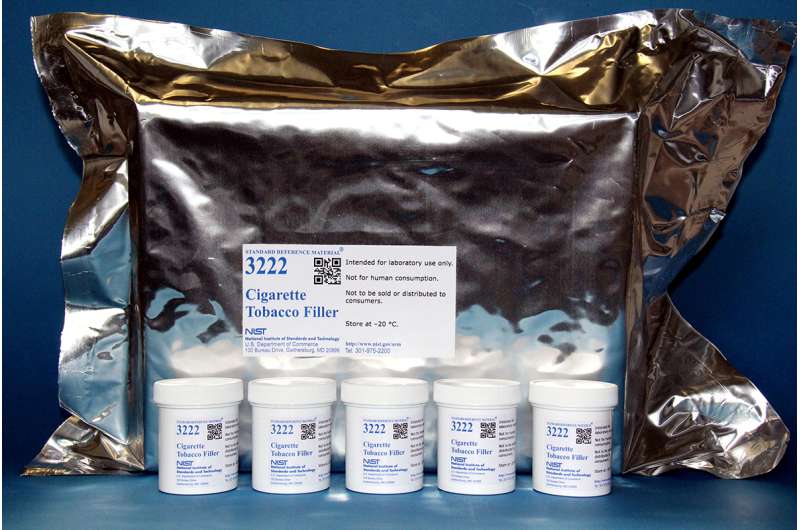NIST reference material helps assure accurate measurement of tobacco product constituents

The National Institute of Standards and Technology (NIST) has issued a reference material with certified amounts of nicotine and two carcinogens to help ensure accurate testing of commercial tobacco filler—the blended tobacco found in cigarettes.
Prepared in collaboration with the Food and Drug Administration's (FDA) Center for Tobacco Products (CTP), NIST's new Standard Reference Material "SRM 3222 Cigarette Tobacco Filler" helps companies meet the federal requirement for reporting "harmful or potentially harmful constituents" in tobacco products and tobacco smoke.
The requirement is in the 2009 Family Smoking Prevention and Tobacco Control Act, which assigned FDA the authority to regulate the manufacture, distribution and marketing of tobacco products to protect public health. In 2012, the agency published a list of 93 substances that cause—or could cause—harm from tobacco use or exposure to tobacco smoke.
"It's important to make regulatory decisions with the best information available," said David L. Ashley, Ph.D., director of CTP's Office of Science. "This tobacco standard reference material and others help inform the evaluation of data on harmful and potentially harmful constituents submitted by manufacturers and importers."
NIST SRM 3222 is certified for amounts of nicotine, the primary cause of tobacco addiction, and two tobacco-specific nitrosamines: N-nitrosonornicotine (NNN), 4-(methylnitrosamino)-1-(3-pyridyl)-1-butanone (NNK). These nitrogen-containing compounds are among the most carcinogenic chemicals in cigarette smoke.

Levels of each of the three compounds in the reference material are certified by NIST using a combination of mass spectrometry and chromatographic methods—techniques for separating and analyzing complex mixtures.
Measurements were made at NIST and the Centers for Disease Control and Prevention and confirmed subsequently at several commercial laboratories.
"The composition of tobacco products can vary greatly," said Lane Sander, the NIST researcher who led development of the SRM. "It's influenced by the tobacco varieties used in production, growing conditions, curing methods and additives. This reference material can serve as a check on composition measurements made during manufacturing and for regulatory purposes."
About 2,500 kilograms (5,500 pounds) of American blended tobacco filler were procured from a commercial source, with established target values for nicotine and nitrosamines. The tobacco was processed and blended by the manufacturer as a cigarette tobacco filler. Dried leaves were chopped to lengths roughly equal to the diameter of a dime and a width equal to the coin's thickness. Each unit of SRM 3222 consists of 20 jars, each containing about 10 grams of filler tobacco.
More information: www-s.nist.gov/srmors/view_detail.cfm?srm=3222


















